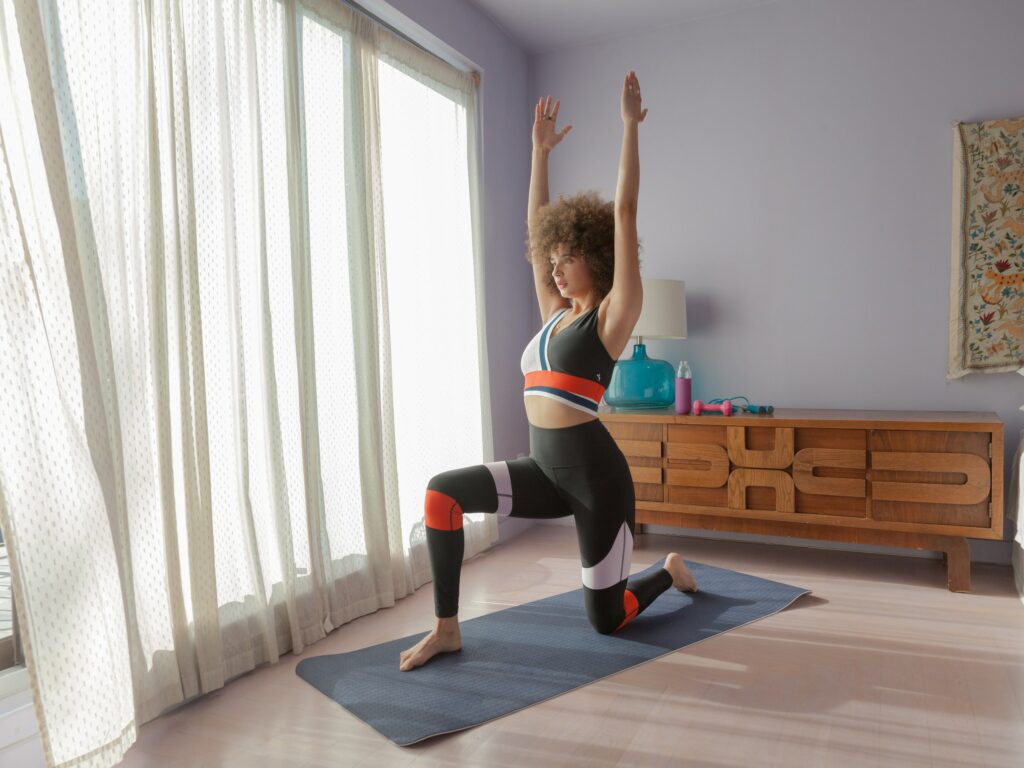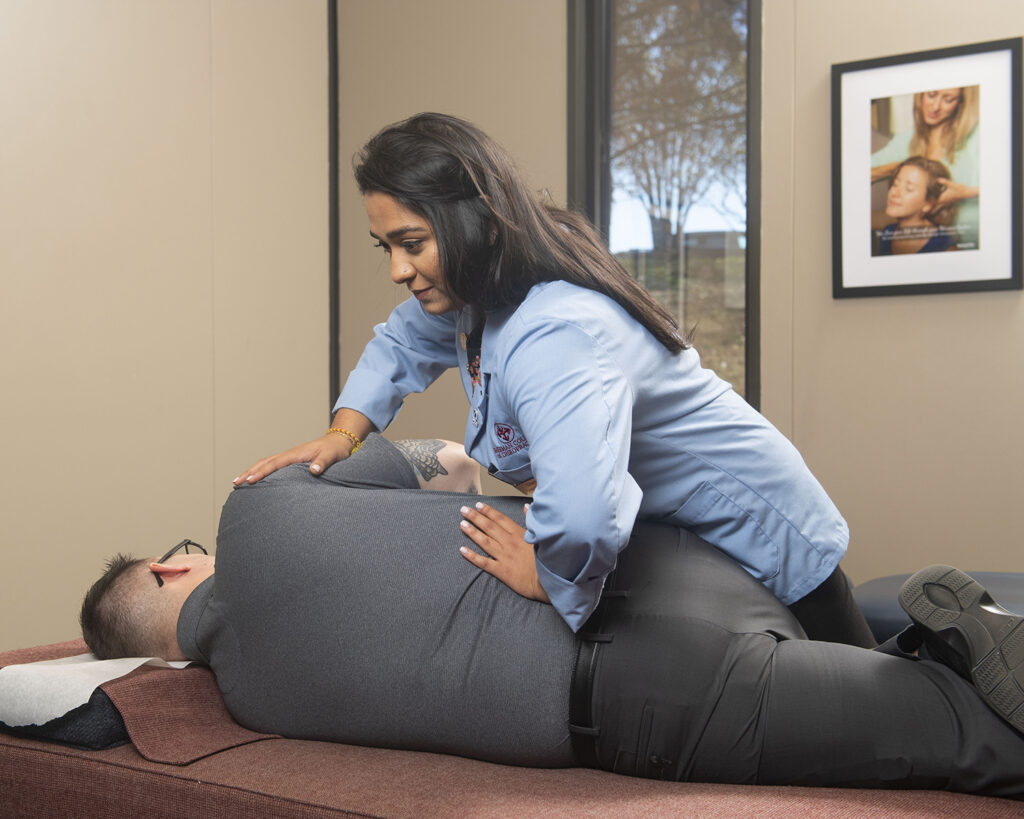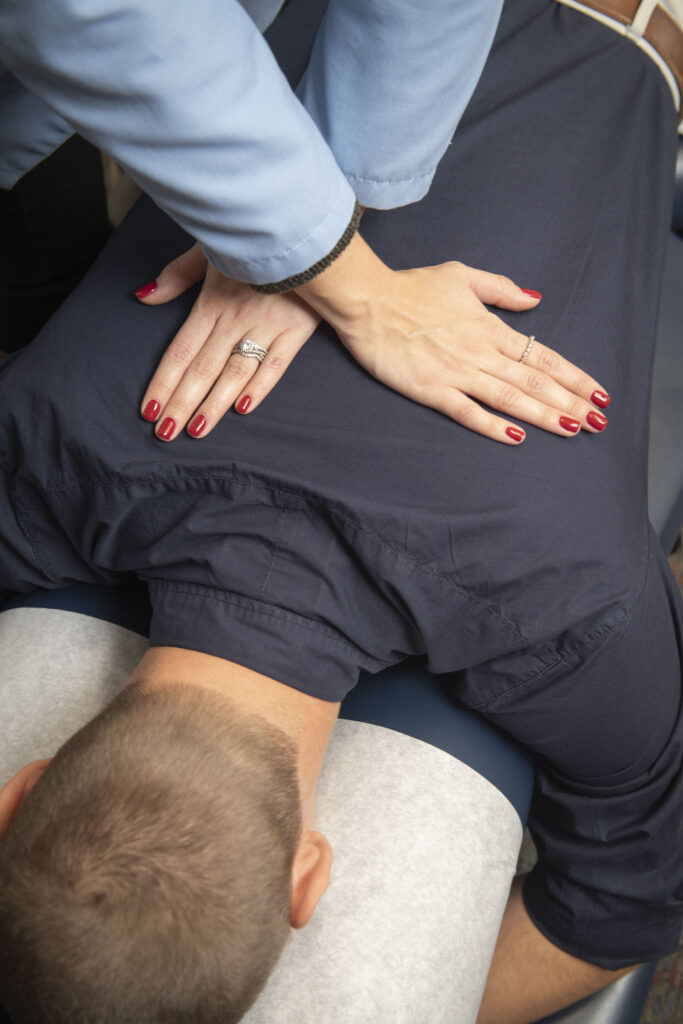
by Daniel J. Becker, D.C., M.Ed., FIANM, DACRB, CCSP
Assistant Professor at Sherman College of Chiropractic, Run For Families Sponsor
Two of the most common questions health and fitness professionals will hear is When should I stretch, before or after a warm-up? and What kinds of stretches are best? The answers to these questions have evolved over the years as new techniques and strategies have been developed.
I remember years ago (many, many years ago), during high school sports, we were told to break a sweat first, then stretch the muscles we would need to use during our sport. The rationale was that increasing blood flow to cold muscles through a brief warm-up would increase their elasticity and enhance stretching. It was also thought that stretching before raising muscle temperature through exercise could increase your likelihood of damaging the muscle or increase your risk for injury. Not everyone was convinced that this was the case, though, and there were still proponents of stretching prior to a warmup. Believers of this concept felt that you had as much of a chance of getting injured by doing a warm-up prior to stretching as you would by stretching after a warm-up.

New considerations, however, are putting this debate to rest, and they also solve some of the inherent problems with the types of stretches that were traditionally done prior to exercise and participation in sports. Fitness professionals are now recommending dynamic stretching prior to exercise. Dynamic stretching is a process where you move through a series of yoga type poses/positions without holding the positions as you would with static stretching or yoga. Describing these motions is difficult, but a quick YouTube search for “Dynamic Stretching” will yield a number of videos with demonstrations of dynamic stretching movements.

Dynamic stretching carries the approval of so many professionals because it can enhance performance by increasing elasticity of muscles while, at the same time, making muscles more ready to contract. Research tells us that when we do stretches that required us to hold the same position for 15-30 sections, we actually decrease the function of that muscle we are trying to stretch. Rather than increasing muscle elasticity by increasing muscle temperature, static stretching decreases blood flow through the muscle, resulting in decreased muscle temperature and an increased resistance to stretching. As you might guess, this is counterproductive!
In addition, experts now recognize that doing static stretching also inhibits neurological function of the muscle being stretched, and this can decrease the ability of a muscle to contract for up to an hour afterward. For example, runners need to use their hamstrings to bend the knee during the heel recovery phase of running gait. But doing static stretching of the hamstrings will actually decrease the efficiency of hamstring contraction, causing increased demand on other muscles, which can then lead to overuse injuries.

The continuous movements of dynamic stretching increase muscle function. Dynamic stretching programs generally involve all of the major muscles and joints of the body and are followed up by a general warmup for 5-10 minutes. If you are participating in a skilled sport, such as baseball, the general warm-up is followed up with a sport-specific warmup for an additional 8-10 minutes, which should involve performing repetitive body motions that mimic the demand of the sport you are going to engage in.
All this isn’t to say that static stretching doesn’t have a place in rehabilitation or general fitness. Static stretching after exercise can help cool down muscle tissue and may decrease soreness later. After exercise, muscles are more elastic due to increased temperature, so after exercise is also a great time to use static stretching to increase overall flexibility.

Properly timed and appropriately chosen stretches can increase exercise and sport performance due to increased neurological function. Did you know that chiropractic care can help you perform your best, too? Research has demonstrated that chiropractic adjustments can increase joint range of motion. In addition, chiropractic adjustments have been shown to facilitate key muscles that are typically inhibited in those with lower extremity overuse use injuries such as iliotibial band syndrome.
These results are just a few of the reasons why chiropractic care is so popular among many high level collegiate and professional athletes, as well as collegiate and professional sports teams and organizations, such as the NFL and the PGA Tour. Setting your body up to work at its best just makes sense! So whether you are a 5K pro, a recreational hiker, an experienced golfer, or a weekend warrior, make sure you take care of your body with appropriate stretching and specific chiropractic care. You can learn more about chiropractic at www.sherman.edu/health-center/.